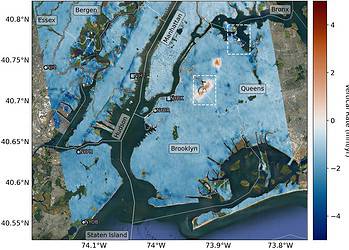
According to multiple sources and internal NASA communications, senior Trump administration officials have instructed NASA to prepare for the termination (and literal destruction) of the Orbiting Carbon Observatories, OCO-2 and OCO-3.
These satellites are widely used by farmers, the oil industry, and a number of scientists and NGO groups. Their mission is to measure carbon dioxide and track plant growth and they’ve been doing it for years. They are among the best tools Earth has for understanding climate change, which makes this decision all the more bizarre.
There’s no technical reason to end either mission. No major failures or cost overruns. The equipment in space is state-of-the-art. In fact, NASA’s own 2023 review found the data coming from the satellites to be “exceptionally high quality.” The missions were recommended for continuation through at least 2026, likely beyond.
But the current US administration wants them gone. This has no apparent reason other than just hiding climate data and, according to critics, it’s illegal.
Trump Is Chopping Up NASA
These two satellites are the only federally run instruments specifically designed to track planet-warming carbon dioxide from space. They map the flow of CO₂ across Earth’s atmosphere, showing how much is being emitted, where it’s coming from, and how much is being absorbed by forests, oceans, and fields. They’re also used to monitor plant health by measuring solar-induced fluorescence (SIF), a faint glow emitted by plants during photosynthesis.
This is practical data used in multiple fields. Farmers use OCO data to track crop health. The USDA uses it for long-term planning. Even oil and gas companies rely on this data to model carbon sinks and risks to infrastructure.
David Crisp, a retired NASA atmospheric physicist who was the principal investigator of the original OCO mission and was OCO-2’s science team leader, says several NASA employees called and asked him questions indicating they were looking for ways to shut the satellites down.
“What I have heard is direct communications from people who were making those plans, who weren’t allowed to tell me that that’s what they were told to do. But they were allowed to ask me questions,” Crisp said. “They were asking me very sharp questions. The only thing that would have motivated those questions was [that] somebody told them to come up with a termination plan.”
This isn’t the first time Trump has taken a hatchet to NASA’s science division.
Battling with the Budget
In 2018, during his first term, Trump tried to cancel the original Orbiting Carbon Observatory program along with four other Earth science missions. He failed then. Congress restored the funding. But now, with a Congress that seems to bend to Trump’s very whim, fewer checks in place, and a team of loyalists in key agency positions, the dynamic is very different.
Instead of a public fight over next year’s budget, Trump officials are allegedly trying to prematurely shut down missions already funded for 2025. According to a July letter signed by 64 members of Congress, that kind of move violates federal law. It’s called impoundment — when the executive branch refuses to spend money that Congress has already approved.
“This is illegal,” says Rep. Zoe Lofgren, a Democrat from California. “Congress has the power of the purse, not Trump or Vought [from the Office of Management and Budget].”
Eliminating funds or scaling down the operations of Earth-observing satellites would be catastrophic and would severely impair our ability to forecast, manage, and respond to severe weather and climate disasters.
Senator Chris Van Hollen, a senior appropriator, was just as blunt: “We rejected cuts that would have devastated NASA science by 47 percent. Eliminating Earth-monitoring satellites would be catastrophic.”
It’s Falling Apart
The Senate’s draft 2026 budget explicitly rejects the Trump administration’s proposed Earth science terminations. It also includes a subtle but critical directive: NASA must “retain public ownership of technologies, scientific data, and discoveries made using public funds.” In other words: don’t privatize Earth science. Don’t scrap satellites built with taxpayer dollars. And don’t throw away the data we need to survive.
Yet, the White House is moving to do just that. This isn’t just about two satellites. It’s about trust, data, and NASA’s role in helping people, and that’s being dismantled step by step. Just recently, Trump’s NASA refused to publish a climate change report that it had already completed, citing ‘no legal obligation’ to do so.
The satellites could still be saved, but it won’t be easy.
Congress can intervene. It already has, in part. But the clock is ticking. Fiscal year 2025 ends on September 30. If Congress doesn’t pass a new budget (or a continuing resolution) the Trump administration could claim the power to start shutting down missions preemptively. They’ve already shown a willingness to do so.
The Trump administration’s strategy is clear: move fast and break all the things you don’t like. Do it quietly and don’t ask permission. In this case, just dismantle the infrastructure of climate science, piece by piece.
For a country that claims to be the leader in science and innovation, killing your carbon-monitoring satellites in the middle of a climate crisis is about as self-sabotaging as it gets. The data is valuable and the costs are low, but Trump has repeatedly expressed his denial of climate change, and these satellites pose a major barrier to that argument.
At the end of the day, you can take down all the satellites in the sky, the carbon will still rise. The planet will still get warmer. Hiding our head in t he sand won’t change anything.






